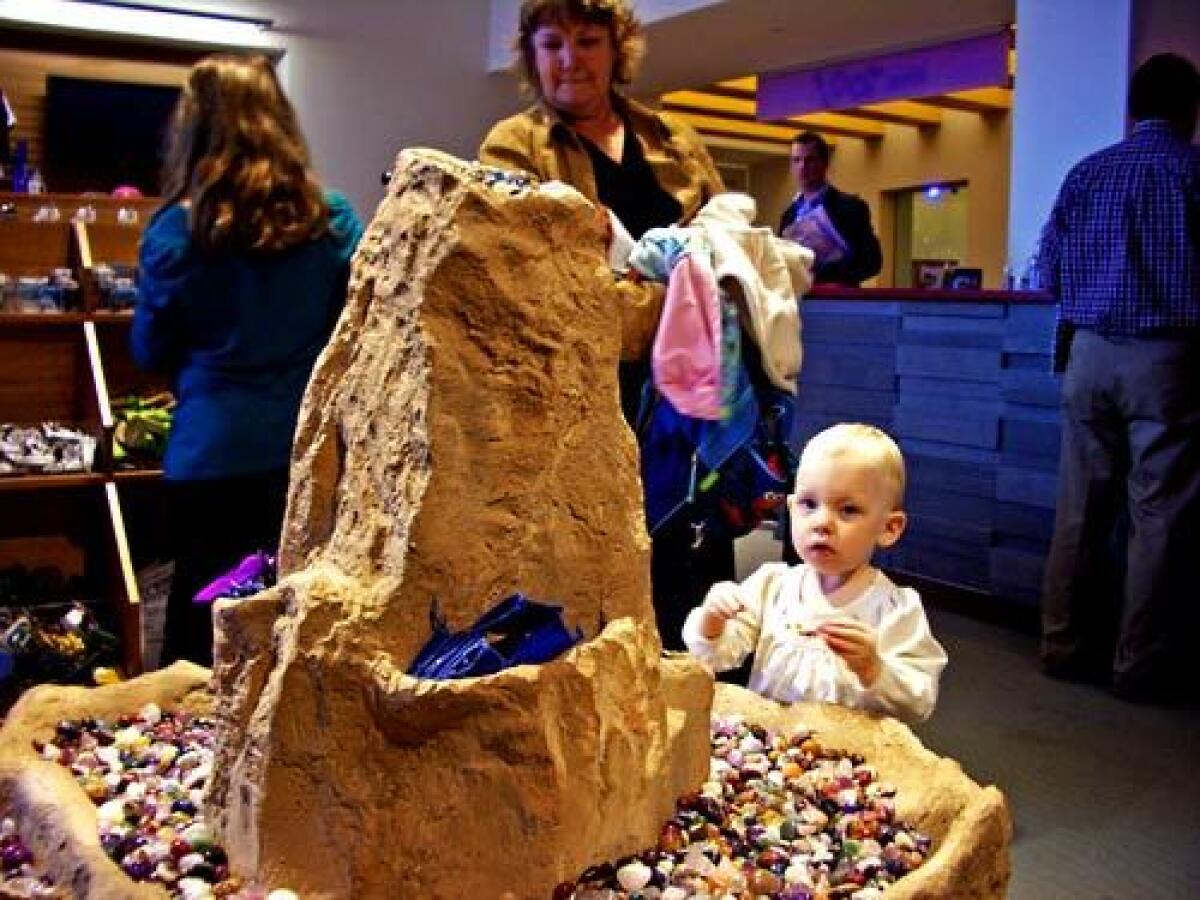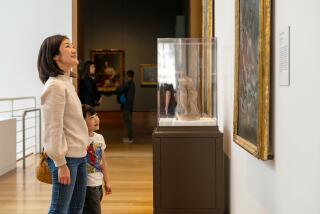Children’s museums take a hands-on approach to little visitors

As our theater seats rocked back and forth for “takeoff,” the kids watching the 4-D animated film “Journey to the Center of the Barnett Shale” at the Fort Worth Museum of Science and History squealed in unison. We had been sprayed with so much mist that even a stone-faced teenager, looking less than thrilled to be museum hopping on his family’s vacation, couldn’t help but laugh.
That an educational film recounting the 300-million-year history of north Texas natural gas had captivated this young audience was an impressive feat today for a children’s museum, where visitor attention spans are measured in text-messaging seconds and traditional artifact-driven exhibitions often seem as dusty as a fossil collection.
The more than 70-year-old institution is one of a handful of toddler- to teenager-focused museums nationwide trying to change that image by expanding facilities and revamping exhibitions with cutting-edge technology, innovative interactive displays and unique educational programming. Children’s museums that were a little too similar to that museum back home are now worth a side trip when planning a family vacation.
“In the 1960s and ‘70s, children’s museums were very general institutions,” says Rachel Teagle, executive director of the New Children’s Museum, a San Diego-based museum that’s distinctive in its focus on contemporary art education. “I think [we] represent a trend of increasing specialization in children’s museums.”
Technology differentiates some children’s museums.
“If you have something extraordinary in the art world to share, people will [continue to] come to your institution,” Fort Worth Museum of Science and History President Van A. Romans says of the draw of blockbuster artworks at fine-art museums. “We’re different; we have to make a commitment to storytelling first.”
Romans, formerly executive director of cultural affairs at Walt Disney Imagineering, developed corporate exhibition programs at Walt Disney World’s Epcot in Florida and for international museums before being recruited in 2004 to radically transform the Fort Worth museum.
In November, the museum unveiled a new $80-million, 166,000-square-foot building with interactive exhibitions such as a make-your-own digital dinosaur simulator and a hybrid digital/real-time planetarium. Some exhibitions feature what the former Disney executive calls “soft technology,” such as computer-simulated trolley and horseback rides to explore the history of streetcars and cattle drives.
Museums with a less technology-driven but still innovative approach are also worth seeking out on family trips. “The first experience children need to have is fun,” says Teagle of the New Children’s Museum. The museum, formerly known as the Children’s Museum/Museo de los Niños San Diego, reopened two years ago in downtown. “Over several visits you get that art education.”
Young visitors are encouraged to touch, climb into or even create additions to the art installations. It’s the opposite approach of most fine-art museums, where high-dollar artworks are closely guarded by security staff, but one that Teagle says has been successful. “Children are an unbridled, enthusiastic audience for art.”
Despite local challenges, the Assn. of Children’s Museums reports that more than 60 new children’s museums are planning to open throughout the U.S. in the coming years. Diane Kopasz, spokeswoman for the Alexandria, Va.-based industry trade group, says sustainability is the burgeoning trend families will begin to notice among children’s museums.
For museums that rely on more traditional artifact-based exhibitions, going green can be mean more than getting a gold star in the community. It can also attract visitors.
Last year the Brooklyn Children’s Museum, the oldest child-focused museum in the U.S., unveiled its Leadership in Energy and Environmental Design (LEED) certified “green” building. Visitors can explore how the museum draws water from underground aquifers and conserves oxygen in galleries. The building serves as an interactive lesson plan on the future of sustainable construction amid the hand-woven quilts and tortoise-shell drums the museum has been collecting since it opened in 1899.
Even at the Fort Worth Museum of Science and History, fake bodies with computer-generated wounds “decomposing” on autopsy tables are seen by the museum president as a supplement to traditional educational tools (the museum partnered with the National Science Foundation and CBS plus a team of forensic experts to design a hands-on forensic studies traveling exhibition based on the “ CSI: Crime Scene Investigation” TV series).
“We still have the live snakes in our museum school classes,” Romans says. “We try to live our heritage.” Whether the next generation of young museum goers and their families will be enraptured by the reptiles remains to be seen. “The response to ‘CSI’ has been extraordinary…it’s been one of our most popular exhibitions.”
More to Read
Sign up for The Wild
We’ll help you find the best places to hike, bike and run, as well as the perfect silent spots for meditation and yoga.
You may occasionally receive promotional content from the Los Angeles Times.






